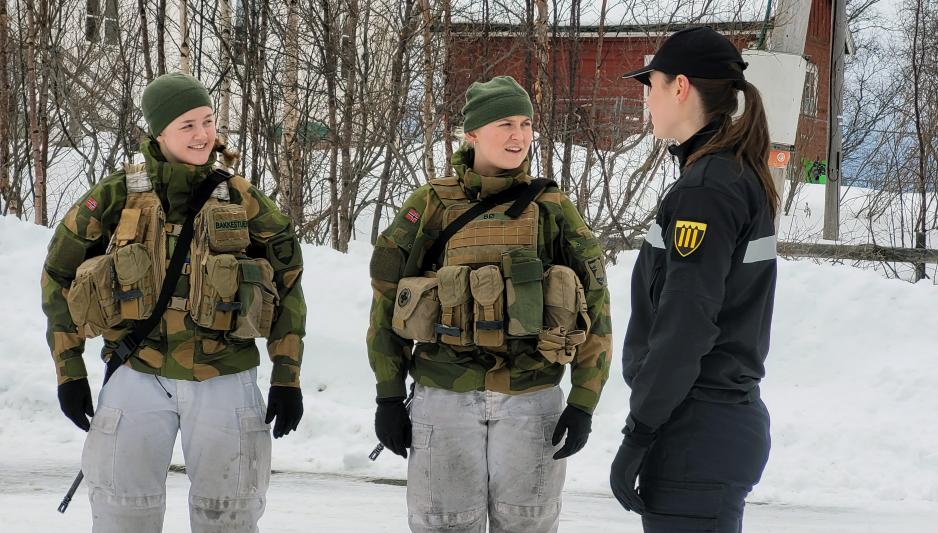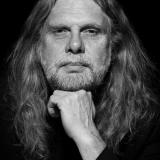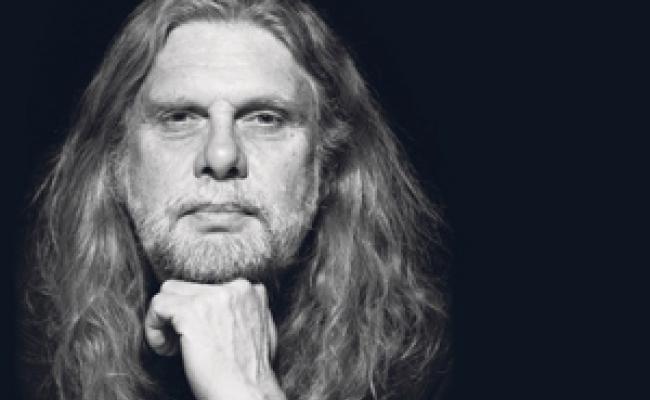Border Journalism

Mari Bekkestuen and Henriette Bøe guard the border between Russia and Norway in Pasvik. (Photo: Arne O. Holm)
(Commentary) Utnes, Pasvik: The ferry no longer operates, and the country on the other side of the frozen river has changed its name. This is where East and West meet.
I stand at the old ferry quay at Utnes, in the Pasvik valley, some 40 kilometers from Kirkenes. A friend tells me that his father in 1939 took the ferry across the Pasvik River to what was then Finland. What made the biggest impression on that traveler was a car dealer in the city that is now Russian and has the name Nikel.
When the ice has settled like a lid over the Pasvik River, Russia is only a few steps away.
Yet you cannot take those steps.
The border between Norway and Russia goes right in the middle of the river, and Utnes is no longer an opening towards the East.
Though middle of the river. Border Commissioner Jens Høilund tells me that the document containing the border agreement between Norway and Russia covers 1,000 pages. But for all practical purposes, the middle of the river will be an accurate description.
Norwegian conscripts continually watch the border from the Norwegian side. I meet some of them as they are heading out to monitor the Easter traffic both on and along the river. Their dialects speak about their not being local, yet their love declarations to the Pasvik border areas sound beautiful in my ears regardless of which dialect it is expressed in.
Along with their officers at the border station, they are not blind to the war machinery growing increasingly threatening and brutal in the High North. They are all in the front line in case of a conflict, yet they are also the first to stress the normalcy which rests over Norwegian-Russian cooperation in the Arctic.
If there is any money left after hotel barons have received their Corona refunds
The hawks, I have learned over the past years, are not in the Armed Forces.
Further in on the riverbanks are the scientists. They, too, are an important part of Norwegian presence along the Norwegian-Russian river. More vulnerable, because they are subject to a different budget than that of the Armed Forces. Important, not only because of the research they conduct, but also because their research is conducted as a physical cooperation between Norwegian and Russian scientists.
An agreement between Norway and Russia makes the borders regularly open to scientists from Svanhovd in the Pasvik Valley and their Russian counterparts. Station Chief Anne Wikan shows me an illustrative picture. In a dinghy, with an almost uselessly small outboard engine in the river streams, Norwegian and Russian scientists endeavor out on the Pasvik River together.
Every year, they repeal the gravity laying in the line drawn between our two countries and move freely between the East and the West. Together, they provide us with insight into nature and a fauna that have no respect whatsoever for cold war and borders shut down by a pandemic. Next year’s national budget will decide whether this core people-to-people cooperation will be allowed to continue.
If there is any money left after hotel barons have received their Corona refunds.
There should be. Because in sum, these communities on the border, civilian and military alike, provide us with first-hand knowledge as well as a historically good neighborly relation.
There is a lot of uncertainty these days – but dinner is secured!
In November, it was announced that the Nikel smelter, a plant that for decades has sent its Sulphur clouds in over Finnmark, would be shut down. From being just a brief ferry voyage away from Utnes in Pasvik, the smelter is relocated to Montchegorsk, further east in Russia. That does not make this research-based cooperation between Norway and Russia any less interesting.
Being close to events is a necessary contribution to political understanding and patterns of action.
But right now, a scientist knocks on my door here in my mobile office. He brought me a freshly caught trout from the Pasvik River.
There is a lot of uncertainty these days – but dinner is secured.
All the best for Easter both to the East and the West!
Also read
This commentary was originally published in Norwegian and has been translated by HNN's Elisabeth Bergquist.


